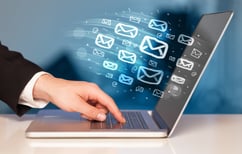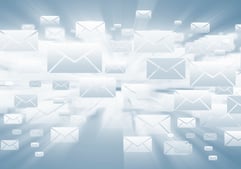If the pandemic has taught us one thing, it is that there is no substitute for face-to-face contact when developing new business opportunities. When we had no choice but to conduct virtual meetings using Microsoft Teams, Zoom, or other meeting software, we did it because, literally, our lives, and livelihoods, depended on it.
As the pandemic begins to recede, attendance at tradeshows and conferences is quickly returning to pre-pandemic levels because, despite the proliferation of meeting software and other means to communicate online, people still feel a strong need to meet face-to-face before deciding whether to trust an outsider to help them meet any given business goal.
Although one can perform due diligence online and by phone, one’s comfort in doing business with someone else depends largely on “gut feelings” about whether one can trust an individual and his or her organization to deliver a product or service as promised.
Earlier this summer, The National Conference and Exhibition for Trade Show and Corporate Event Marketing attracted more than 3,000 attendees to its Exhibitor Live exhibition and conference. Although that number is down from the more than 4,000 people who attended the 2019 event before the pandemic, it shows that there is strong interest among companies across all sectors to get back to using a mix of technology tools and face-to-face contact for attracting new customers and strengthening relationships with established ones.
Getting Into “Show-Shape”
Having been out of the tradeshow routine for an extended period of time, your “show muscles” may need some conditioning as you prepare to hit the road in the coming weeks and months. To help you get the most value for the resources you dedicate to participation in tradeshows and conferences, we’ve developed a helpful checklist of activities you should perform and questions you should ask before you create promotional materials and invest in other activities
 Brand Positioning
Brand Positioning
Be able to answer the questions, “Why are you in business?” and “How are you different from your competitors?” Increasingly, buyers want solid answers to those questions before they care about what you are selling. For example, Apple’s why statement is “We believe we are on the face of the earth to make great products.” As for industrial manufacturers, Nucor Steel’s reason for being is “To lead our industry by providing unparalleled customer care, building trusted partnerships and creating sustained value.” and Caterpillar’s purpose is “To help our customers build a better, more sustainable world.”
Clearly, Apple’s vision statement is bolder and more compelling than the other two, and you should modify your why to the greatest extent reasonably possible to reflect the ambitiousness of Apple’s vision statement. After you and your team clarify your thinking in this vein, you will be able to differentiate your company from competitors in a memorable way that can generate business opportunities.
 Message Development
Message Development
After you have staked your position in the markets you serve, or would like to serve, it is critical to have a clear idea of what you would like to tell target audiences about your product or service. To which job title, or titles, are messages about your products or services relevant? What kind of “mood” or “feeling” do you want to create around your brand? Answers to those questions will determine what you say, to whom you say it, and how you say it. That is, whether you use a friendly or authoritative tone, and whether you provide many or few technical details to generate interest in what you’re selling.
 Pre-Show Communication
Pre-Show Communication
Prior to attending a show, it’s important for you to tell prospects and customers that you’ll be there so they can arrange to interact with you in some fashion. Pre-show communication should always include the dates you’ll be at the show, your booth number, and what action you would like customers to take while at the show. Such calls to action include Set Up a Meeting, Request a Demo or Visit Our Booth.
If you will be presenting content at the conference portion of the program or participating in a roundtable discussion, you should list those engagements in your communications with prospects and customers. That level of participation strengthens your standing as an expert and can help to build the trust necessary to form new relationships and fortify existing ones.
Show Preparation
To help ensure you make a lasting impression on your target audiences, it is important to think about the design and content of your booth, of banners to attract the attention of people walking down the aisle where your booth is located, product demonstration videos that can play on a continuous loop, and digital or printed sales literature that explains the features and benefits of your products or processes.
 In-Show Communication & Management
In-Show Communication & Management
Throughout the show, send emails to your contacts every 24-48 hours encouraging them to visit your booth, schedule a meeting, request a demo, or attend a presentation you may be giving or a panel discussion in which you’re participating. Be sure to scan the badges of everyone who visits your booth or capture their contact information in another way so you may follow up with them after the show to qualify those individuals as leads.
Post-Show Communication
Within a week of returning from the show, send thank-you emails to everyone who visited your booth, or to qualified prospects if you’ve had a chance to determine who they are, and let them know that you appreciate them taking the time to stop by. Your email message should ask whether the individual would like to schedule a Teams or Zoom meeting to further discuss his or her needs for your product or service.
After you have followed up with visitors, you should enter your new contacts into CRM and marketing automation databases to help you send prospects messages that resonate with them, as well as keep a record of your interactions with prospects throughout their journey to becoming one of your valued customers.
If a prospect you met at the show is particularly “hot,” telephone follow-up and scheduling of an onsite visit are most appropriate. There are no fixed rules, nor any formulas, for knowing when and how to closely interact with a prospect, but your experience or that of more seasoned colleagues can guide you accordingly.
If done right, preparing for a tradeshow and following up with prospects requires lots of hard work upfront and post-show, and contradicts the all-too-common belief that attending a show is a few days of downtime away from the office or plant.
As the expression goes, “Nothing is worth doing unless it takes effort.”
To get the most out of your tradeshow participation, set up a time to meet with a member of the GrowthHive team.